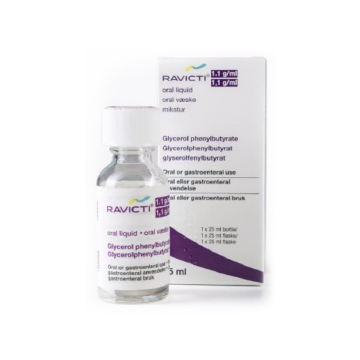RAVICTI®
EMA approved indication: RAVICTI® is indicated for use as adjunctive therapy for chronic management of patients with urea cycle disorders (UCDs) including deficiencies of carbamoyl phosphate synthetase I (CPS), ornithine carbamoyltransferase (OTC), argininosuccinate synthetase (ASS), argininosuccinate lyase (ASL), arginase I (ARG) and ornithine translocase deficiency hyperornithinaemia-hyperammonaemia homocitrullinuria syndrome (HHH) who cannot be managed by dietary protein restriction and/or amino acid supplementation alone. RAVICTI® must be used with dietary protein restriction and, in some cases, dietary supplements (e.g., essential amino acids, arginine, citrulline, protein-free calorie supplements).






